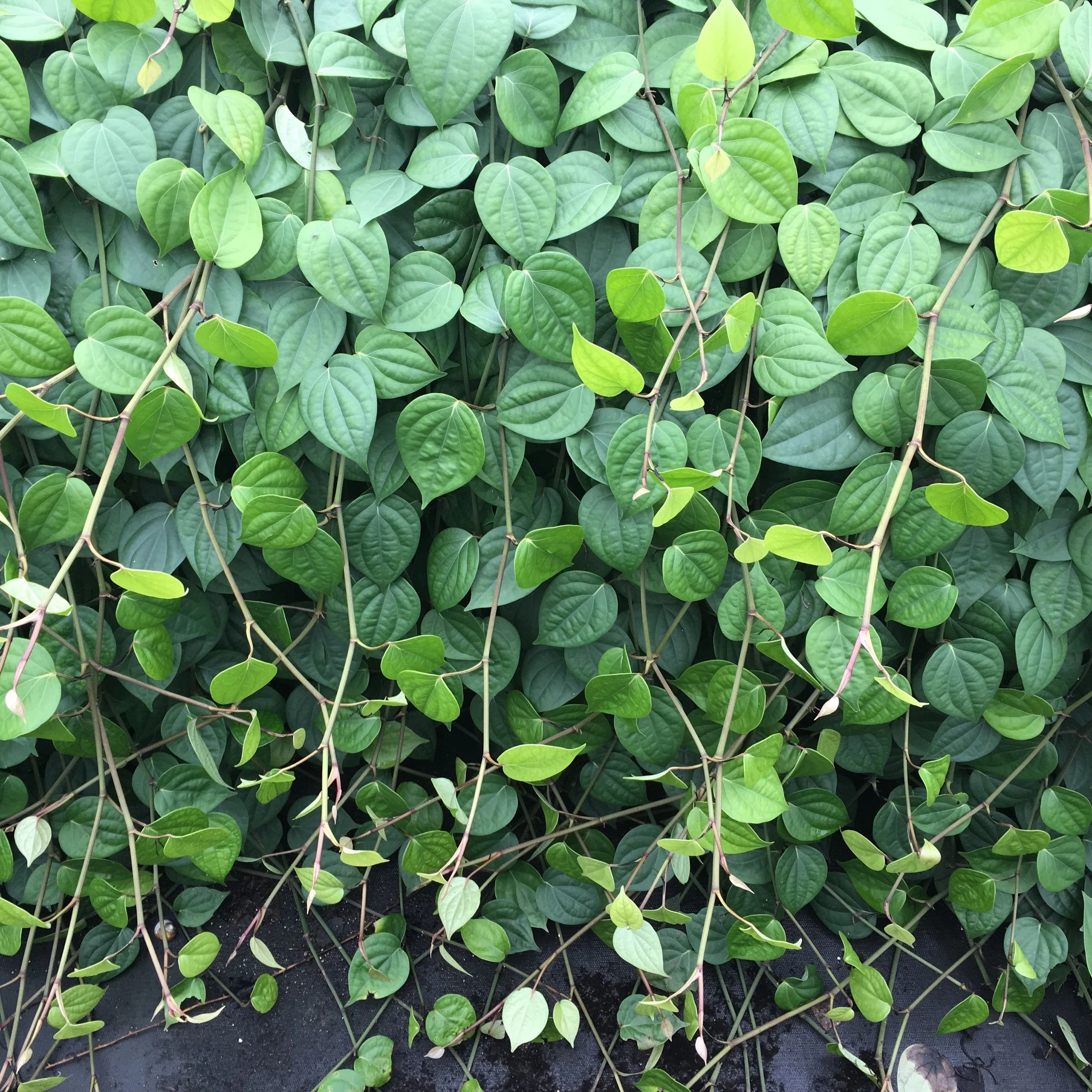Black Pepper Vine
Piper Nigrum
days to maturity:
plant spacing: 1 plant every 2 feet, trellised
sunlight requirements: partial sun, shade loving
look out for: leaf and foot rot
harvest notes: can take years to produce berries
seasons: fall, winter, spring and summer
perennial
Black pepper vine is not grown commercially in the US because very few areas have the right growing conditions, but we are super lucky in South Florida to have the heat, humidity and lack of frost that this tropical vine needs in order to thrive.
In addition to its culinary value, pepper makes a lovely houseplant or landscaping plant with its glossy, evergreen leaves and large flowers. People growing pepper commercially tend to trellis the vines by wrapping them around a trellis about 6 feet tall, so that they can reach the whole plant easily. In the Spring make sure to fertilize with composted chicken manure and/or kelp meal to encourage new growth. Pepper plants ideally would have 4-6 hours of sun but not intense mid-day sun, instead they would do well to have access to early morning or late evening sun.
The fruit, known as a peppercorn when dried, is a small drupe, dark red when fully mature, containing a single seed. Depending on harvest time and processing, peppercorns can be black, white, green and red. To make black peppercorns you harvest the drupe of peppercorns green, boil them in water for a while to break down the cells, then let them dry. As they dry out they turn black and get wrinkly, turning into the black peppercorns you’re familiar with. To make white pepper you harvest the peppercorns red (ripe) then ferment them in water briefly to remove the red flesh, leaving just the small seed, which is a white peppercorn.
Our in house tropical herbalist, The Garden Jules, says: “I like to think of Black Pepper as a catalyst, meaning it’s useful in making other plants taken with it more bio available in the body. It’s a mover and shaker, getting nutrients in the body where they need to go. Hence why black pepper is so often served with our meals and not purely on its own. I most often think of Black Pepper as a catalyst to Turmeric, making it’s active compound curcumin 2,000 more times bio available in the body.”

